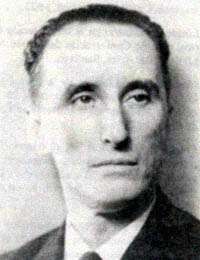Chilean presidential election, 1946
| | ||||||||||||||||||||||||||||||||||||||||||||||||||||||
| ||||||||||||||||||||||||||||||||||||||||||||||||||||||
| ||||||||||||||||||||||||||||||||||||||||||||||||||||||
 |
| This article is part of a series on the politics and government of Chile |
| Comptroller General |
| Constitutional Court |
| Foreign relations |
Presidential elections were held in Chile on September 4, 1946.[1] The result was a victory for Gabriel González Videla of the Radical Party, who received 40% of the public vote and 75% of the Congressional vote.
Electoral system
The election was held using the absolute majority system, under which a candidate had to receive over 50% of the popular vote to be elected. If no candidate received over 50% of the vote, both house of the National Congress would come together to vote on the two candidates that received the most votes.[2]
Candidates
Fernando Alessandri
The support of the Democratic Alliance to Gonzalez motivates the separation of a part of the Radical Party, opposite to the communist-radical alliance, which there shapes the Democratic Radical party directed by Julio Durán and Arturo Olavarría. This conglomerate raises Alfredo Duhalde's candidacy, supported also by the Authentic Socialist Party. Then, in one slightly confused situation, Duhalde and Arturo Alessandri stoop his respective candidacies giving step to the candidate Fernando Alessandri Rodríguez, standard-bearer of liberal, radical democratic and authentic Socialists of Marmaduke Grove.
Eduardo Cruz-Coke
The right-wing meets in his own convention in July. Conservative, liberal and agrarian Labours Parties members come to the Convention with the following candidates:
- Conservatives: Eduardo Cruz-Coke.
- Agrarian Labour Party: Jaime Larraín.
- Liberal: Arturo Alessandri, Jose Maza Fernandez and Francisco Bulnes Correa.
Nevertheless none manages to triumph in the Convention (65 % was needed and then 60 % of the delegates to be elect) and this one is suspended after one week. Diverse meetings for the only candidate fail, and in this way Eduardo Cruz-Coke's candidacies remain elevated, supported for the conservatives and Arturo Alessandri, for liberal and agrarian Labour Parties members. Then he remains only Cruz-Coke supported by the conservatives, since liberal and agrarian Labours Parties members continue with Fernando Alessandri's candidacy, together with a sector of the radicalism (Democratic Radical party), after the resignations of Arturo Alessandri and the vice-president Alfredo Duhalde.
Gabriel González Videla
Already in February 1946 the situation had been defined inside the Radical party (of the president Ríos) where there face Gabriel Gonzalez Videla and Arturo Olavarría, the latter the support of the "Duhaldist" faction. Nevertheless, before the voting this one sector abstains, leaving only Olavarría, who is widely defeated by his contender.
For your part, the Democratic Alliance, auccessor of the Popular Front, meets in a convention on July 21 and decides to support Gonzalez, leaving of side the candidacy of the communist Elías Lafertte.
Bernardo Ibañez
The Socialist Party of Chile, opposite to such circumstances, there proposes his own candidate, Bernardo Ibáñez Aguila, though in the election are going to give his vote to Gonzalez Videla.
Results
| Candidate | Party | Public vote | Congressional vote | |||
|---|---|---|---|---|---|---|
| Votes | % | Votes | % | |||
| Gabriel González Videla | Radical | 192,207 | 40.2 | 138 | 75.0 | |
| Eduardo Cruz-Coke | Conservative | 142,441 | 29.8 | 46 | 25.0 | |
| Fernando Alessandri | Liberal | 131,023 | 27.4 | |||
| Bernardo Ibáñez | Socialist | 12,114 | 2.5 | |||
| Others | 16 | 0.0 | ||||
| Invalid/blank votes | 1,509 | – | 1 | – | ||
| Total | 479,310 | 100 | 185 | 100 | ||
| Registered voters/turnout | 631,257 | 75.9 | 192 | 96.4 | ||
| Source: Nohlen, Chilean Electoral Database | ||||||
.jpg)


